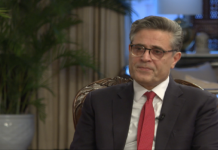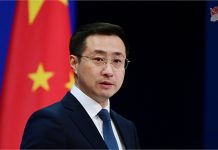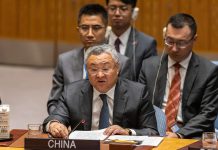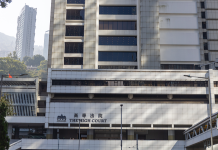By Josef Gregory Mahoney
Perhaps the most curious thing about COVID-19 is not its complicated pathology, its rapid mutations, the fact that many are infected and remain symptomless while others die, or that some experience a debilitating long version of the disease set in after the initial infection. Rather, in our highly globalized world, the rapid spread and almost universal human encounter with the disease has become a threshold moment in human history. While other pandemics have come and gone in the past, and while scientists promise us COVID-19 is the first of many more to come, most of us will demarcate our lives in two periods: before the outbreak and after.
But this is only the shell of the curiosity—the kernel within is that despite the near-universal experience, how some societies have dealt with the pandemic and been impacted by it in turn are at the opposite ends of the spectrum. And in this respect, the distinct differences between two societies in particular, American and Chinese, illustrate not just the common cause of rupture, but what also appears increasingly to be profound divergences in respective national fates.
Misperceptions
It’s too easy unfortunately to point to the overwhelming difference between the two countries. Today, almost twice as many Americans die each month from COVID-19 than the total death toll in China since the disease first emerged in 2019. As the U.S. approaches 1 million dead, the Chinese fatalities are still less than 5,000. As the U.S. struggles to mandate vaccination and masking for those who oppose it, and even, to provide adequate testing for those who demand it, China has stuck successfully to its zero-COVID-19 approach.
When China committed itself to this strategy, Western experts and pundits viewed it as quixotic—an impossible standard that would expose the limits of Chinese governance. And yet, the policy is incredibly successful and beneficial to both China and the world, with deep popular support in the country. So what do we hear in international media? Oh, this was the act of a “repressive government,” or, with Omicron, containment is becoming impossible. But the results still prove otherwise.
One of the most enduring misperceptions of China, particularly in the West, is the idea that China’s political system is an externality of the Chinese people. This misunderstanding is rooted in the fact that Western political philosophy tends to view a government as a necessary evil—something that must be subdivided through a separation of powers and even further limited by private property rights and civil society protections, to restrict tyranny and maximize individual freedoms.
This is to say there is a tendency in the West to view their own governments with profound suspicion and distrust, as an externality or carbuncle, like a disease that cannot be completely cured. This sentiment has been peaking over the past two decades as American politics has become more polarized and the polis more alienated, to the extent that many across the ideological spectrum are convinced that U.S. democracy is in decline and that the government is anything but “by and for the people.”
Consequently, it’s unsurprising that Westerners would trust the Chinese Government no more than their own, fear its capacity and reduce relations to a zero-sum game. This is heightened of course when other ideological factors are introduced or reintroduced, e.g., the old narratives associated with great power competition, the Cold War, the Red Scares and anti-socialism. But here again are simple differences between the U.S. and China: zero-sum vs. zero-COVID-19; contain China vs. contain the disease.
What’s most remarkable about persistent Western criticism of China’s anti-COVID-19 policy is that the alternative is so clearly worse, not just for China but everyone else. Had China not followed this approach, it is relatively certain more than 10 million, and perhaps many more, would have died. Furthermore, given the population density in key cities, health system collapses would have likely occurred. We would have seen as we’ve seen in the U.S.: The elderly, the poor and minorities most affected; children’s lives severely disrupted. We would see women’s professional gains take major steps backward, again as we’ve seen in the West as women were among the first to be laid off as economies contracted, among the first to get sick given their roles in the service industry, and among the first to be broken as they were forced to stay at home, doing their jobs online—if they still had them—and shepherding their kids through online programs that have produced incredible reversals in student achievements going by recent testing results.
Governance
When you talk to people in China today, most seem to understand and accept the necessity of zero-COVID-19. As a hospitality executive whose industry has been hammered by the outbreak recently told me, “We all know that it is the only way forward. The only thing we don’t know is when the rest of the world will get on board and we can move forward together.” Again, here’s a succinct difference, as China manages quarantine hotels, and adopts elaborate, people-centered approaches at both the national and local levels aiming to protect lives and livelihoods, including sophisticated contact tracing, testing regimes, travel and local mobility codes, and rapid responses to local cases: hospitality vs. hospitals.
But let us be clear: China contained the outbreak because it had to, because it could, and because its people wanted to. In terms of Foucauldian political philosophy, the biopolitics of China’s COVID-19 containment policy is effective due to a profound “governmentality,” where the people and their government are thinking together in the same ways. In this sense, government is not an externality but an internality. It is not only a projection of what people want, but it is also an active agency of the people themselves as they mask, vaccinate, test and quarantine when necessary.
That said, consider the global consequences if China had not followed this strategy: likely a multitude of additional virus mutations, more global spread, more global economic instability, and across the board, increased insecurity. Desperate nations do desperate things. Imagine if China was desperate today and compelled thusly to follow the U.S. down the dark rabbit hole of Cold War, reactionary impulses. For example, the U.S. sells weapons of mass destruction to Australia via AUKUS, an alliance consisting of Australia, the UK and the U.S. China largely ignores this and instead mass produces vaccines for the world: nuclear proliferation vs. vaccine proliferation, agents of death vs. agents of life.
Having lived through the worst days of the American response and now witnessing firsthand how China has dealt with the disease, what strikes me is the complete inversion of experience in the world’s two leading economies. Americans are dying by the thousands daily. While many in the U.S. rail against the federal government as a “freedom-repressing COVID-19 state,” others are furious that Washington is completely incapable of actually dealing with the problem.
In both cases there are three intersecting pathologies: the disease of the state, the disease of society, and COVID-19. The West is waiting for the disease to burn itself out, waiting for the vulnerable to die and the less vulnerable to soldier on, and hoping for a similar cure of state and society. What positive lessons they might otherwise draw from China in this moment seem more distant than ever. -The Daily Mail-Beijing Review News Exchange Item






